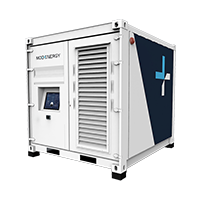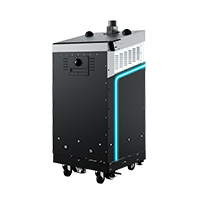Vinci Autoroutes: recharging customers at a car-sharing area
As part of its commitment to the energy transition and improving the user experience, Vinci Autoroutes intends to offer recharging solutions for electric vehicles at its car-sharing areas.
The challenge lay in the need to deploy an IRVE adapted to users’ parking times, without requiring a new transformer and with the possibility of monetising the charging service.
Vinci Autoroutes chose the Eiko solution to meet its various challenges and tosupply 10 charging points at its car-sharing area.
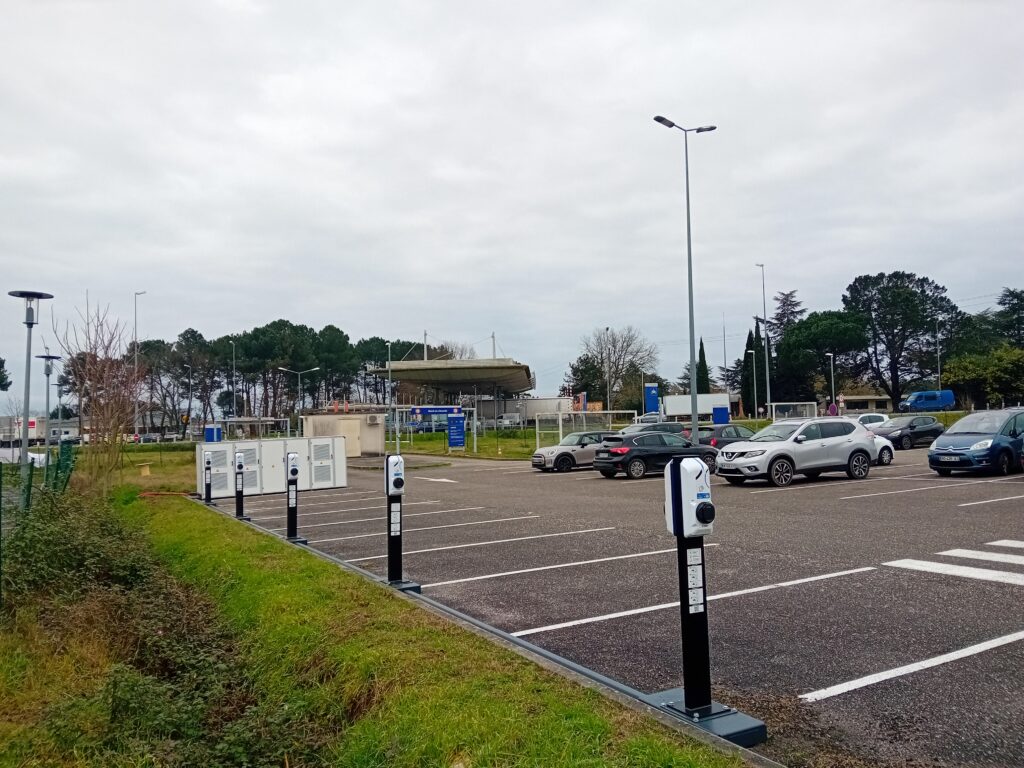
The challenges of recharging at park-and-ride sites: the case of Vinci Autoroutes
Making up for the lack of available power
Car parks or park-and-ride sites are structurally able to supply electric power. Indeed, until the advent of the electric vehicle, the power requirements of a public car park of this type are very low.
Like many other car parks of this type, the Vinci Autoroutes car park in Langon is faced with these power constraints. Thanks to Eiko, and with a connection to the grid at just 27 kW, ten charging points were deployed in record time: less than a week.
The low connection power is more than enough to recharge the two second-life batteries in Eiko, with a total storage capacity of 100 kWh, when there is little or no energy demand from users. And when electric vehicles are plugged in, these same batteries boost power to deliver energy at a higher output. Thanks to power conversion, a total of 45 kW is intelligently distributed across the interconnected charging points.
Install terminals adapted to long-term parking
Parking times at car-sharing and park-and-ride sites are long: from half a day to several days. A slow charge is therefore more than sufficient for users’ daily needs. Eiko has made it possible to install 10 7.4 kW charge points to recharge all the vehicles parked in the relay car park, taking into account their actual needs.
Users of the service tell the system how long they plan to park and how much energy they want to recover to recharge for 30, 50 or 100 km. The intelligent control system coordinates the various commands to prioritise requests, distribute power and distribute energy to the right terminal at the right time, so that all users’ energy needs are fully met.
Monetising the recharging service
At park-and-ride sites and car-sharing areas, as here in Langon, this new recharging service open to the public is subject to a charge. To monetise charging points, they need to be connected and interoperable, not forgetting the customer experience, which needs to be simple, fluid and transparent.
Eiko responds to these needs by offering several payment methods, such as bank cards or mobility badges, and by displaying the cost of recharging for electromobilists with total transparency from the moment the order is placed.
Limiting work
In the specific context of a carpool park, where fluidity and accessibility are essential, civil engineering works represent a major challenge. Apart from the cost involved, the work is likely to cause significant disruption to the site’s day-to-day activity.
- Theadvantage of Eiko is that it can be installed above ground, eliminating the need for major works such as earthworks to bury the cables.
- As the bollards are interconnected, this approach significantly reduces the need to run cables and simplifies the installation process, while preserving the car park asphalt and minimising disruption to customers.
- Eiko requires only a small amount of power to operate. The solution does not require any major changes to the electrical infrastructure, such as the installation of a new main LV board, a new delivery point (PDL), or even a new transformer.
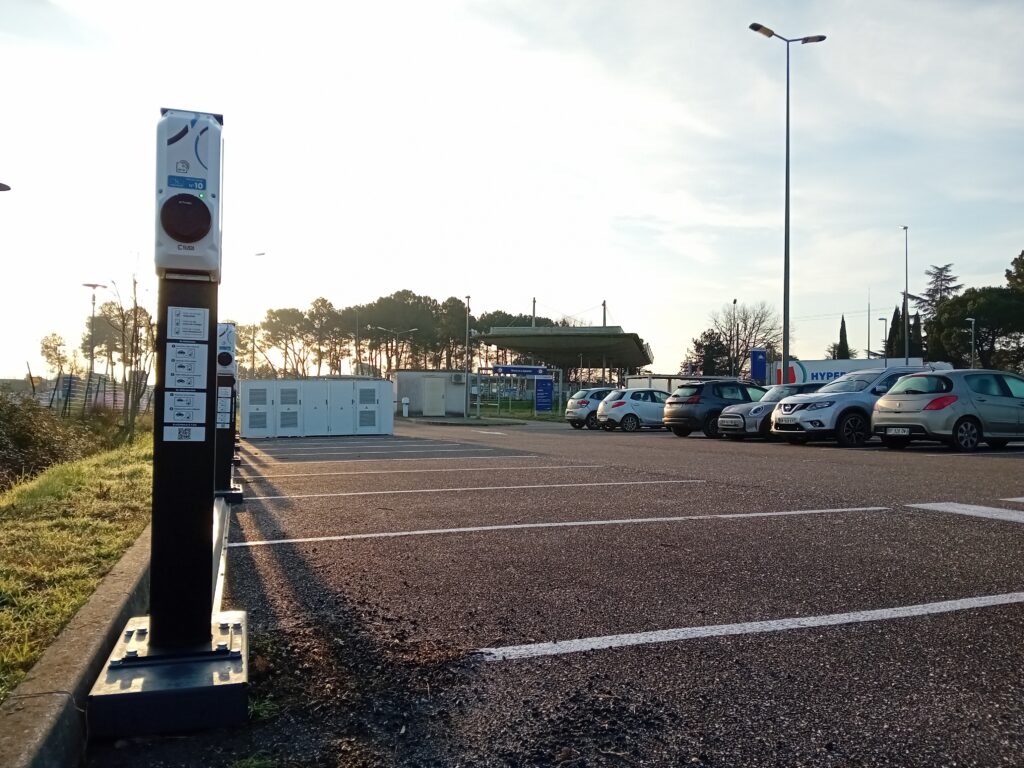
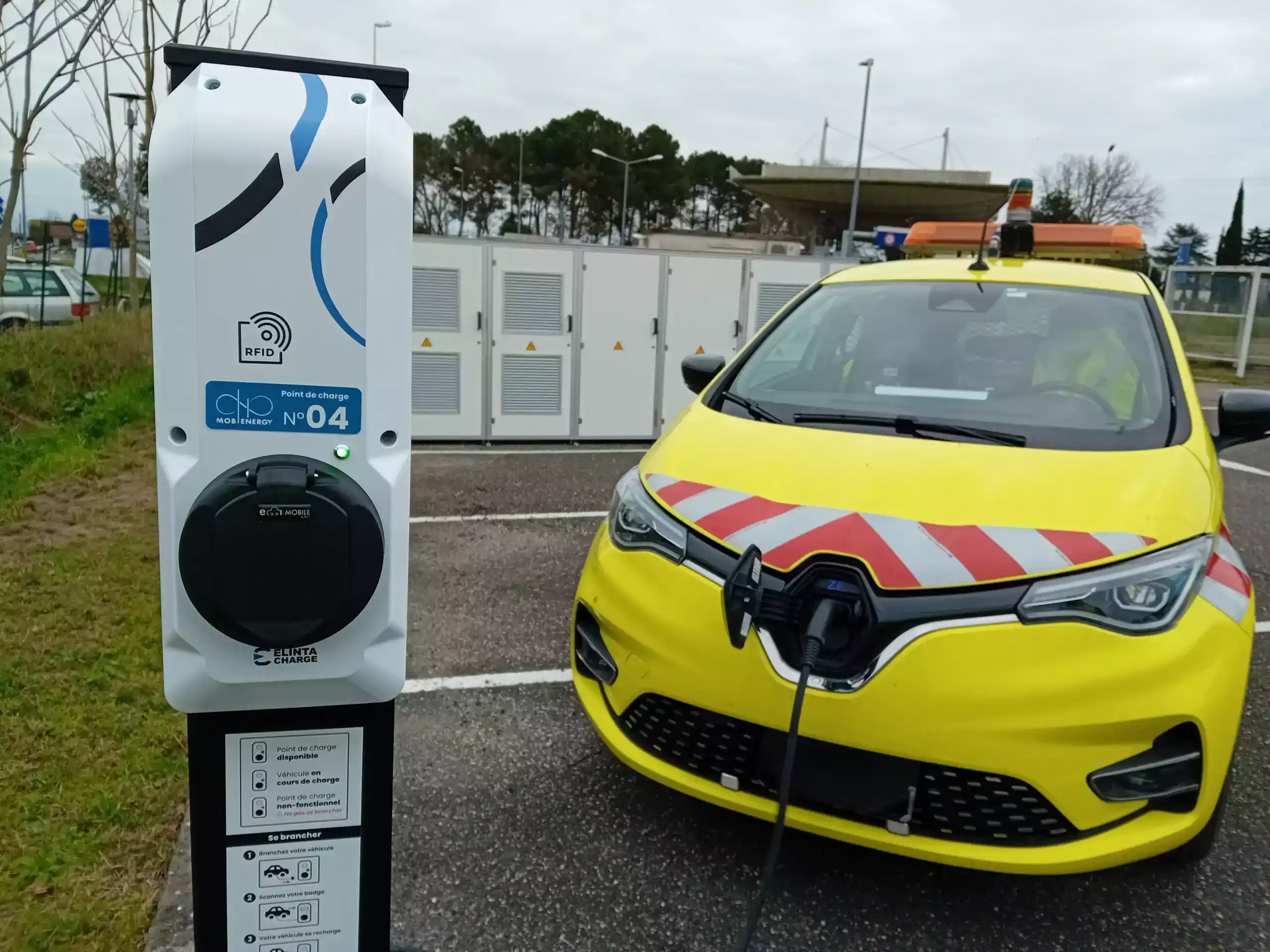
Your customized project
Every parking lot is different.
Every customer has his or her own recharging needs.
That’s why our solutions are modular and scalable, so that your recharging infrastructure is perfectly suited to your needs at all times.
